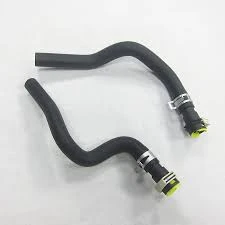transmission piston seal
Understanding Transmission Piston Seals Importance and Functionality
Transmission systems are crucial components of automobiles that ensure smooth and efficient power delivery from the engine to the wheels. One of the key elements of a transmission system is the piston seal, which plays a vital role in maintaining proper performance and longevity of the transmission. In this article, we will explore the significance, functionality, and maintenance of transmission piston seals.
At its core, a transmission piston seal is designed to prevent fluid leaks within the transmission. It acts as a barrier between moving components and the transmission fluid, which is essential for lubricating, cooling, and facilitating hydraulic pressure in the system. The seals are typically made of durable materials such as rubber, Viton, or other synthetic compounds that can withstand high temperatures and pressures.
Functionality of Piston Seals
1. Leak Prevention One of the primary functions of a piston seal is to prevent the transmission fluid from leaking out of the system. Any loss of fluid can lead to inadequate lubrication, resulting in overheating and potential damage to transmission components.
2. Maintaining Pressure Piston seals help maintain the hydraulic pressure necessary for the proper operation of the transmission. This pressure is crucial for the smooth shifting of gears, which ultimately influences the performance and fuel efficiency of the vehicle. If a seal fails, it can result in a drop in pressure, leading to poor shifting or even loss of gear engagement.
3. Wear Resistance Transmission seals are subject to constant wear due to the movement of the pistons and the aggressive nature of the transmission fluid. High-quality materials and precise engineering ensure that piston seals can endure these harsh conditions without degrading rapidly.
Common Issues with Piston Seals
Piston seals can experience wear and tear over time, leading to several common issues
- Fluid Leaks A noticeable sign of a failing piston seal is the presence of transmission fluid leaks. These leaks can often be identified by fluid pooling under the vehicle or wet spots around the transmission.
transmission piston seal

- Gear Slippage If the pressure created by the piston is not maintained due to a damaged seal, it can lead to gear slippage. This occurs when the transmission suddenly changes gears, which can be hazardous while driving.
- Overheating Inadequate fluid levels due to leaks can result in overheating of the transmission
. Overheating can cause severe damage to internal components, leading to costly repairs.Maintenance Tips
Maintaining transmission piston seals is vital for the longevity of the transmission system. Here are some tips for ensuring their proper function
1. Regular Inspections Periodically check for signs of transmission fluid leaks. Early detection can prevent more significant issues down the line.
2. Fluid Changes Regularly changing the transmission fluid according to the manufacturer’s recommendations can help keep the seals lubricated and in good condition.
3. Use Quality Fluids and Parts Using high-quality transmission fluid and replacement seals can help enhance the durability and performance of the transmission system.
4. Professional Checks If you notice any irregularities with gear shifting or fluid leaks, it is advisable to consult a professional mechanic. They can diagnose any issues with the piston seals and recommend appropriate actions.
In conclusion, transmission piston seals play an essential role in the efficient functioning of a vehicle's transmission system. By preventing fluid leaks and maintaining necessary hydraulic pressure, they ensure that the vehicle operates smoothly and reliably. Regular maintenance and timely interventions can significantly enhance the life span of these components, thereby safeguarding the entire transmission system.
-
What You Need to Know About Oil Drain Plugs and Their Costs
News May.12,2025
-
Solving Common Issues with a Leaking Drain Plug
News May.12,2025
-
How to Fix Common Oil Pan Drain Plug Issues
News May.12,2025
-
Everything You Need to Know About Flat Seal Gaskets and Rings
News May.12,2025
-
Choosing the Right Washer for Your Oil Drain Plug
News May.12,2025
-
Choosing the Right Drain Plug for Your Oil Change Needs
News May.12,2025
-
The Ultimate Guide to Building a Car Repair Kit Every Driver Should Own
News May.09,2025
Products categories















